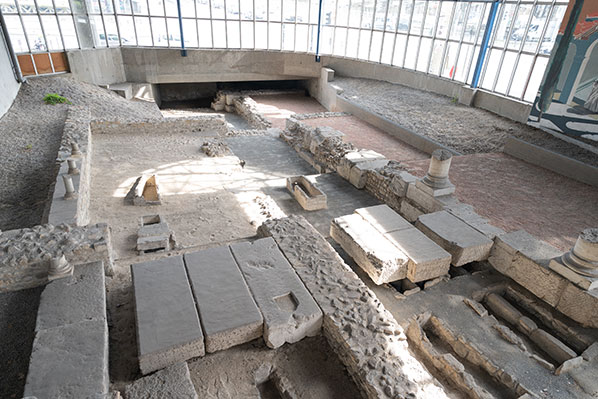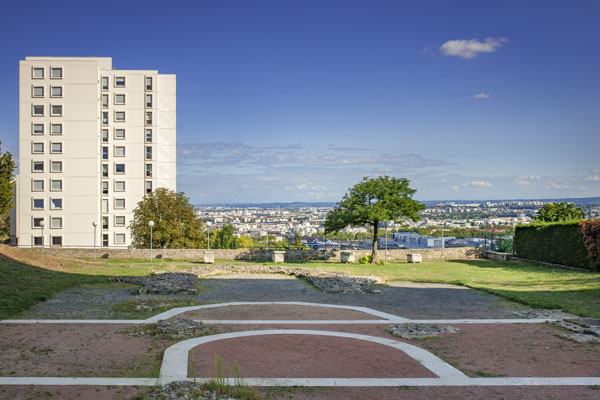The Roman baths
Go under the arcades of the buildings on 6 Rue des Farges to discover the ruins of former Roman baths built in the first century A.D. Around these baths was a very dense neighborhood of homes, workshops and shops. Vestiges of the site were unearthed in the seventies.
The practice of bathing required successive rooms, including a changing room, warm and hot rooms with pools, a sudatorium (the equivalent of our sauna) and a cold room with swimming pool.
Only the south end of the building is visible, since the main part is buried under the Jean Moulin middle school. This is the rounded end (apse) of the two warm rooms and part of the courtyard (palaestra) where people exercised before taking a bath.1st-3rd century.
6-10 rue des Farges. Open access
The Saint-Laurent de Choulans basilica
Vestiges from the site have been incorporated into the building located near the entrance to the Fourvière tunnel. The ruins of this church were discovered by chance in 1946 and were explored twice while the tunnel was being built. Only the foundations of the northern half of the building, as well as a number of sarcophagi, can be seen.
During late Antiquity, when the first places of Christian worship were being built around the relics or tombs of pious individuals, the faithful were buried inside or even around these places of worship.6th-8th century.
41 quai Fulchiron
Saint-Just basilica and necropolis
On the terrace overlooking the Saône river, a Gallo-Roman home from the late first century was first replaced by a necropolis, then by a church, one of the oldest in Lyon, which was rebuilt several times until the end of the Middle Ages.
Excavations carried out in 1970 revealed the foundations of five successive churches. Dating from the fourth century, the oldest of these is associated to a mausoleum, perhaps that of Justus, Bishop of Lyon, who was a contemporary of St. Martin of Tours. In the sixth century, a vast new basilica was built and would be enlarged several times until the thirteenth century.
Today, the foundations of these first two buildings can still be seen, as well as the semicircular extremity (apse) of the last church. Discovered during the digging operations, a number of sarcophagi are arranged around the vestiges.
At the entrance to this site, which was listed as a Historical Monument in 1984, a mural reproduces part of the Scenographic Plan of Lyon (ca. 1550) that shows the Saint-Just church shortly before it was destroyed by the Protestants in 1562.4th-13th century.
11 rue des Macchabées. Open access




